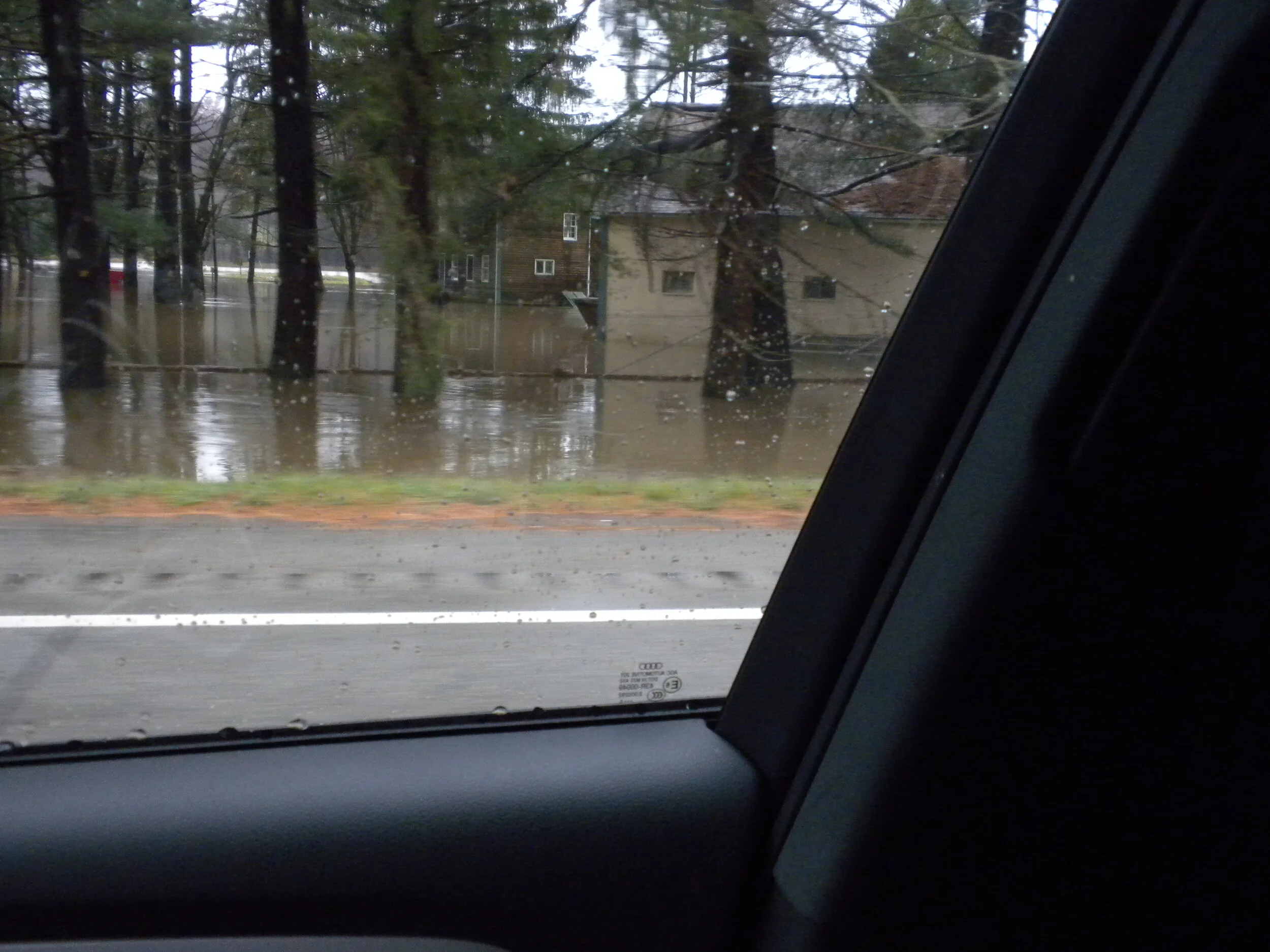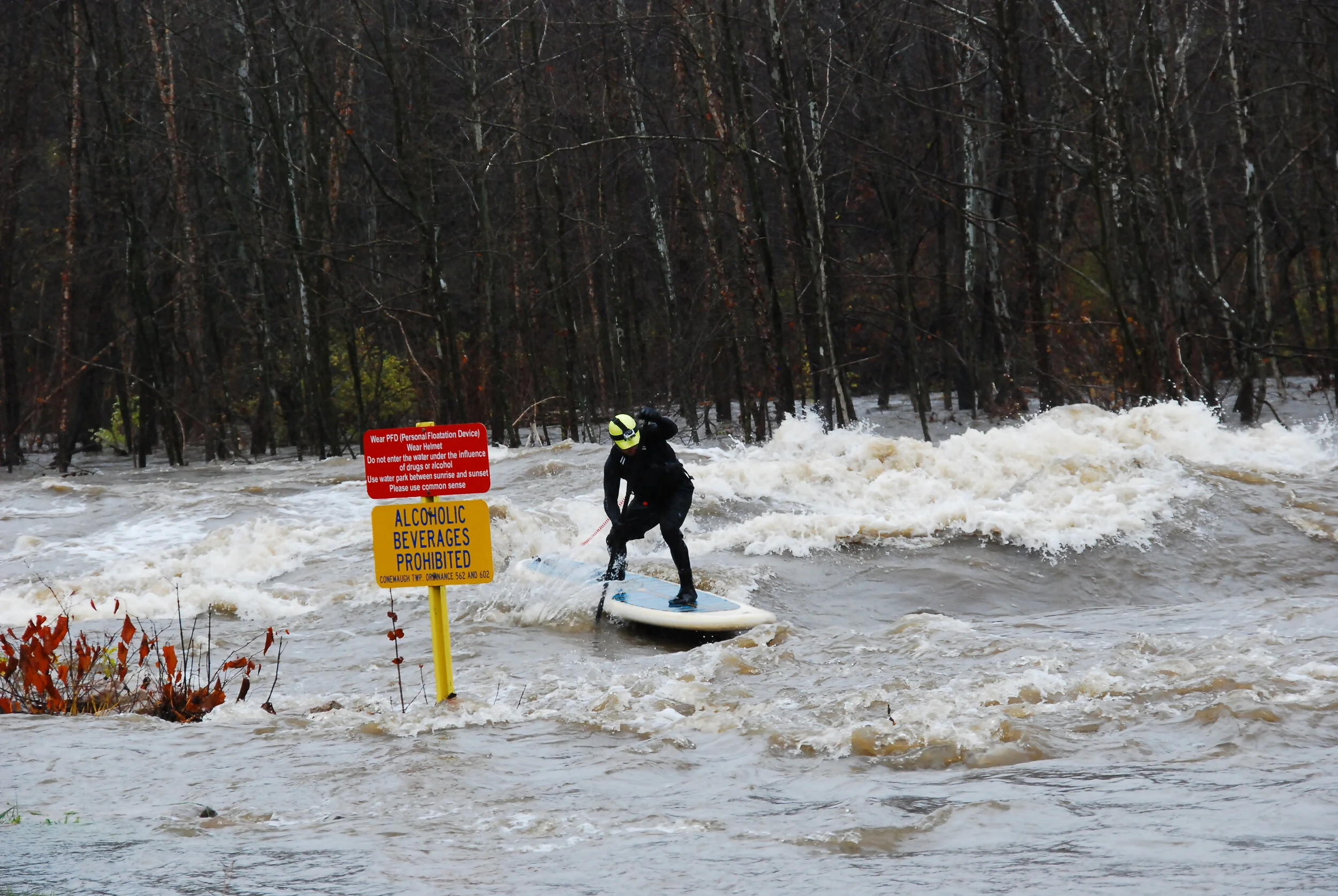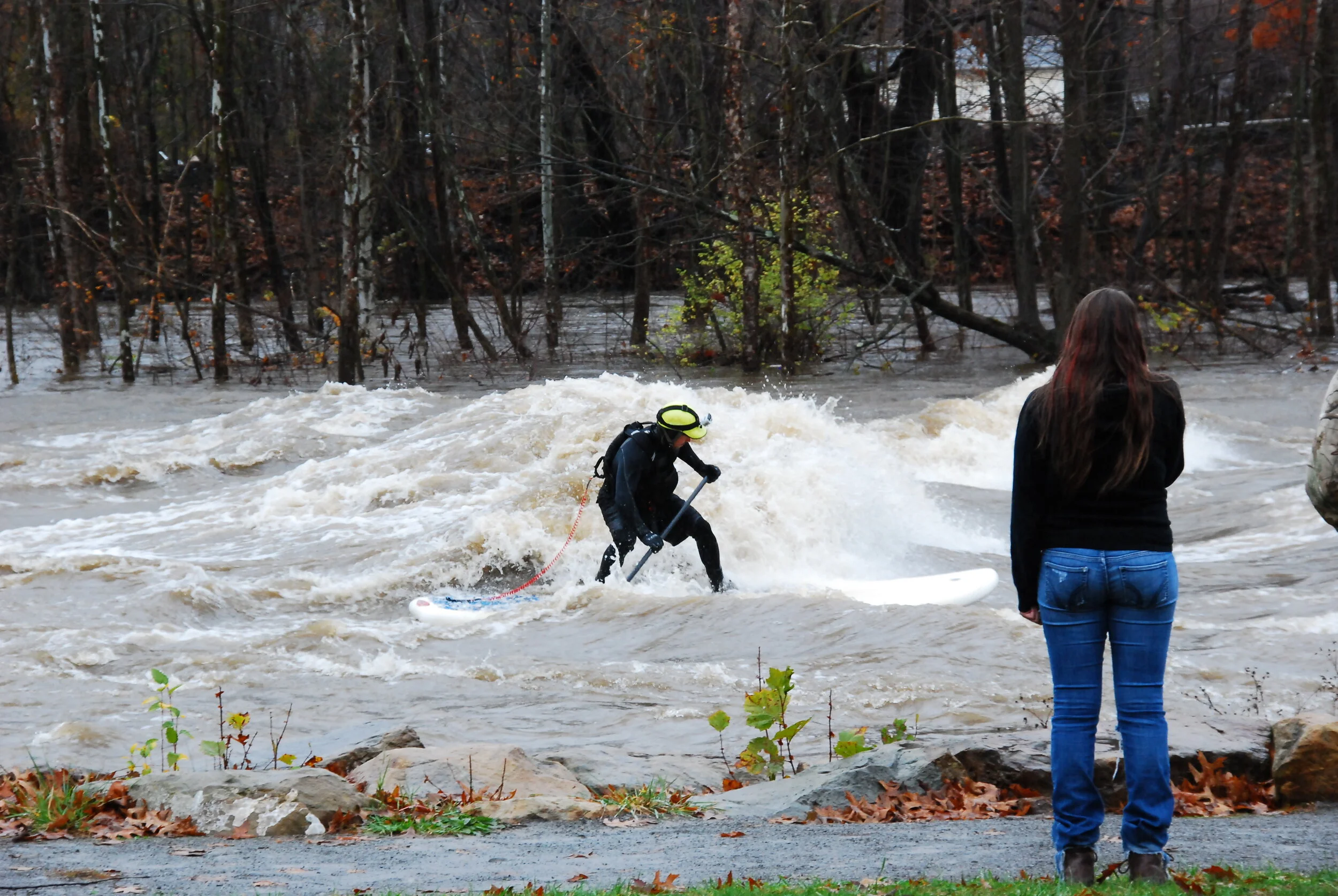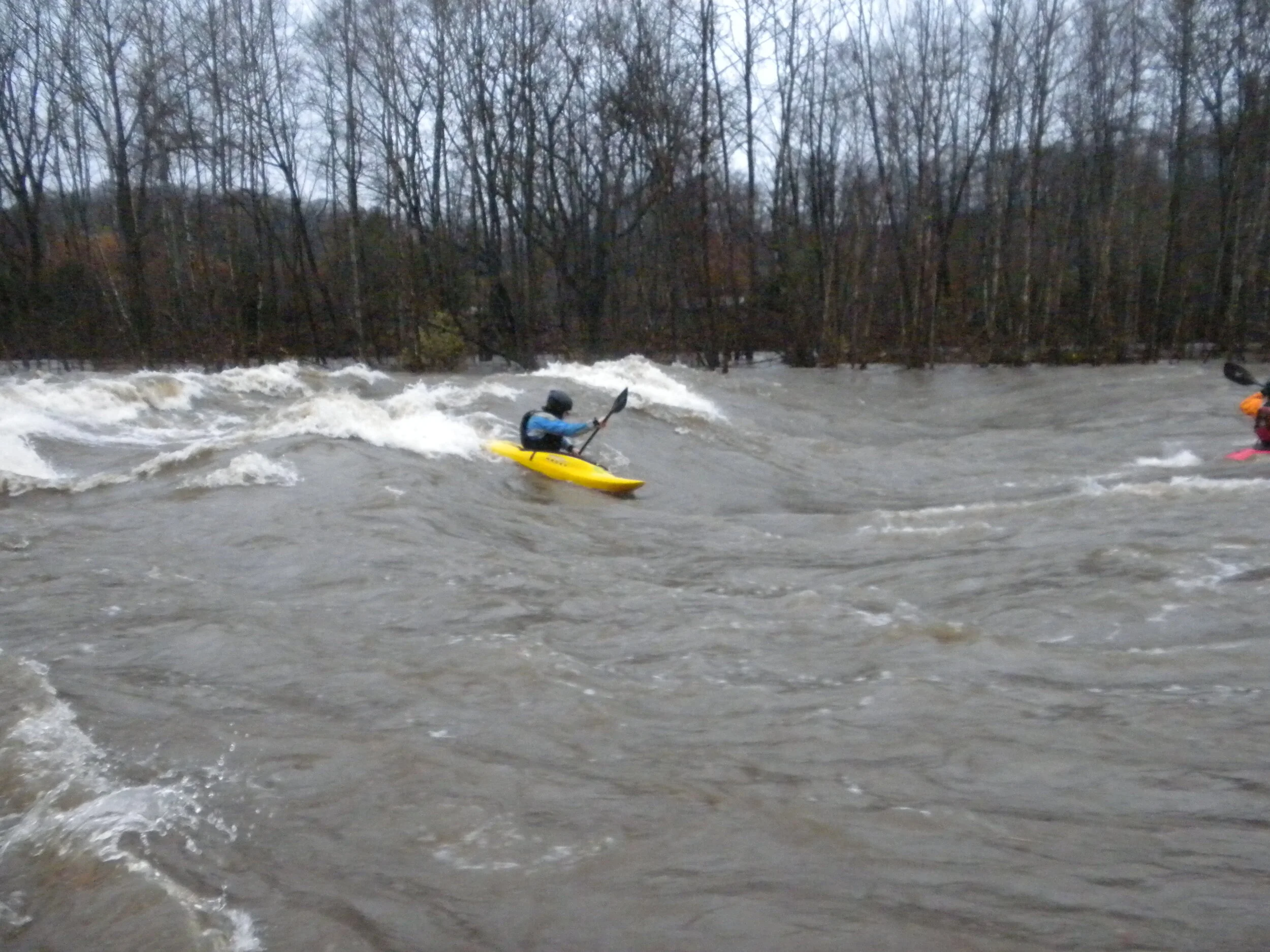This blog revisits the Frankenstorm of October, 2012, when a massive storm system devastated the East Coast and sent whitewater paddlers on a frenzied search for giant waves and untapped micro creeks.
Though Halloween was approaching, the eerie warnings flashing across the TV, Internet and from friends and family were real. Hurricane Sandy was moving in from the Atlantic and threatening devastation throughout the North East. As the weather turned grim, most people were staying indoors and watching the “Frankenstorm’s” progress on the news. For whitewater enthusiasts, however, it was like getting week-long private admission to an amusement park. The creeks and rivers that had been dry from the summer’s drought were finally open for exploration.
As the rain and winds moved in to Western Pennsylvania, I met with my friend Christian and his brother Caleb for an evening run on a local favorite, Slippery Rock Creek. This drainage was on the edge of the storm’s path and was rising steadily, but not as ferociously as the other creeks further East and South. None-the-less it made for an exciting evening and a great warm-up for the days to come.
The next day I woke early and scanned the online USGS gauges in order to find the drainages with the most ideal water levels. I was shocked to see the inflated values and vertical graphs in all of my favorite areas. The Stonycreek River had risen from three-feet to over ten-feet overnight. Big Sandy Creek in West Virginia showed similar numbers, along with two-feet of snow that reportedly blanketed the mountainous regions of PA and WV. Given these crazy numbers, my choices for whitewater SUP were micro-creeking or big-water park and play. Not having anyone else to go with, I opted for park and play at the Stonycreek’s Greenhouse Park, where a giant surf wave with safe access and exit points awaited.
On the drive to Greenhouse, I passed through Ligonier on Rt. 30, which parallels Loyalhanna Creek for a few miles. I was utterly shocked at the torrent of brown water raging through the valley. As I entered a low point in the road I became nervous as the water was only a foot or two below the highway. There were houses, businesses, and cars in mid-stream. It was devastating and certainly humbling to watch as others suffered. This high water allows us to have fun but it was a reminder of how quickly that can change. I continued on and was relieved to see that it was a fairly small portion of the town that was submerged. I hoped that the water wouldn’t rise further and as I passed through later that night it appeared to have leveled-off as Rt. 30 was still open.
Passing over the mountains and into the Laurel Highlands the valleys and peaks were blanketed with snow and high water continued to billow through the troughs and valleys. I arrived at Greenhouse Park and was relieved that the parking lot was still open and filled with spectators that had come to see the roaring waters. My first sight of the wave was from downstream and it looked like the shoulder of a monster surging and exploding in white froth. A few of my friends were there watching the water and two other kayakers were doing their best to catch the beast for a wild ride (I would later become friends with them - Mike Cook and Chris Malec. They had been there a while and were doing their last attempts as I suited up.
Being alone, I was more than a little hesitant about setting off into the river. I gave a throw bag to one of my friends on shore but knew it wasn’t long enough to be of much help should I get stuck in a hole. The waves appeared to be flushing, not “sticky” which means it won’t hold a person or his craft for a long period of time. But when you are facing a river flowing at around 12,000 cfs it is easy to second-guess your visual interpretation of what the water is doing. I started out with my biggest board, an 11’ ULI Steamroller and my biggest paddle blade, a Werner Advantage to help make it out in the maelstrom of boiling water. After a few minutes of watching the waves, I stepped onto the board and headed downstream through the 200-yard gauntlet to feel out the water before attempting to surf. I made it through and was confident I could catch the wave safely.
It took a few attempts before getting a feel for the high-flow rapids and after each attempt I had to hike back up through the park to get back to the top. I started ferrying futher out, facing upstream as I careened into the trough and paddling hard to harness the upstream force of the wave but wasn’t able to generate enough power to catch it. I tried over and over but kept washing downstream. I decided to switch to a smaller board, a 9’3” ULI Fat Ass Quad. Despite it being less buoyant, the responsiveness and shortness of the board felt promising. It was also much nicer to hike up to the top with the lighter board.
After dozens of failed attempts, another kayaker (Chris Lee) showed up. I was just about to succumb to the wave being uncatchable but decided to stay out and see how Chis did. I watched as he was able to get a nice ride on the second wave. He inspired me to keep at it and I managed to find a sweet spot on the wave and caught it! It was only for a few seconds but the feeling was unbelievable. This was by far the biggest wave I have ever surfed and I immediately wanted more. I was running out of energy but had a blast taking turns with Chris. It would turn out to be my only ride but I gained some valuable big-water experience and confidence.
I would later learn that the river had peaked at around 14,500 CFS! An amazing photographer named Deb was able to get some incredible photos of the action. Thank you so much for spending so much time out there and sharing these, Deb.








